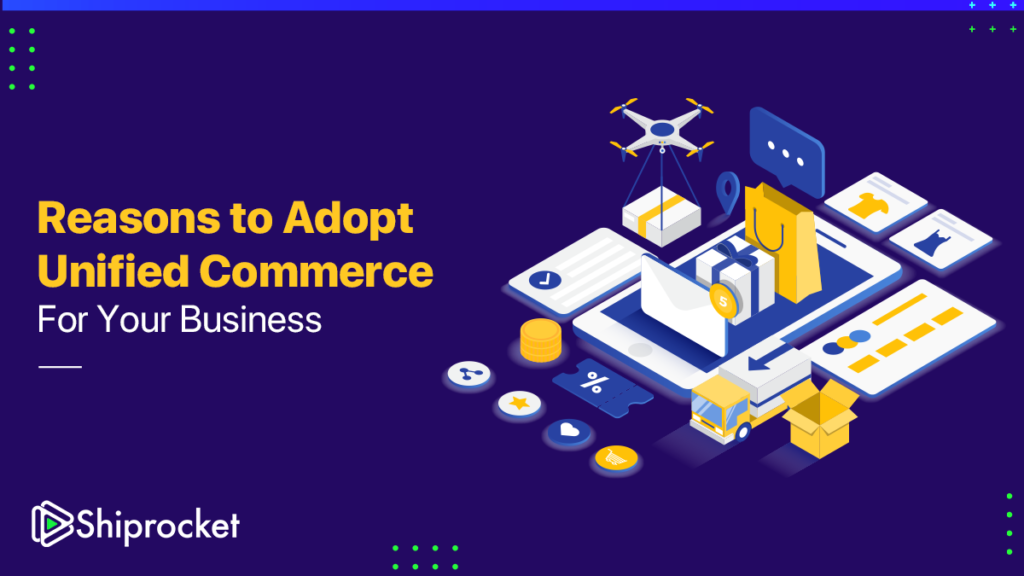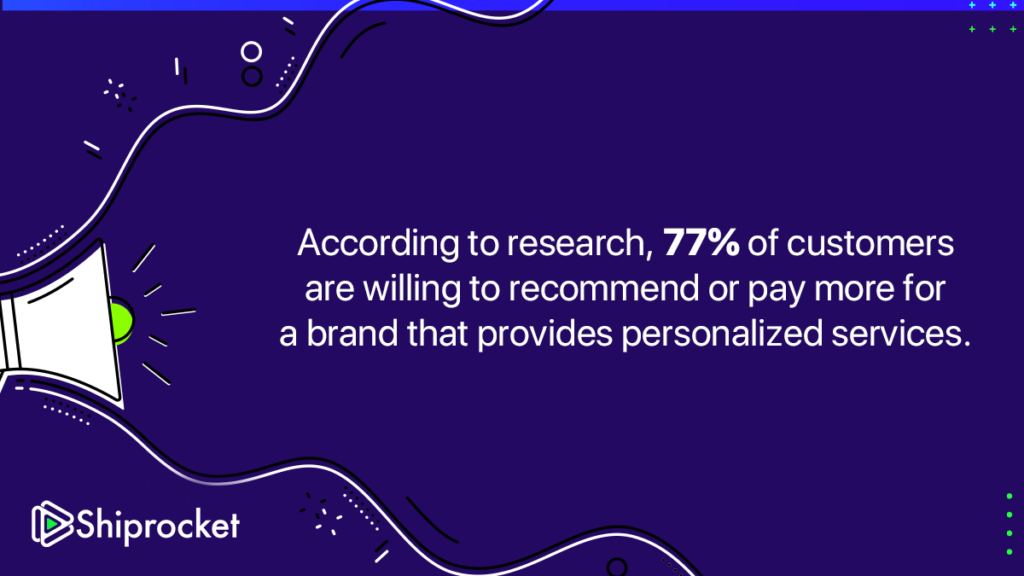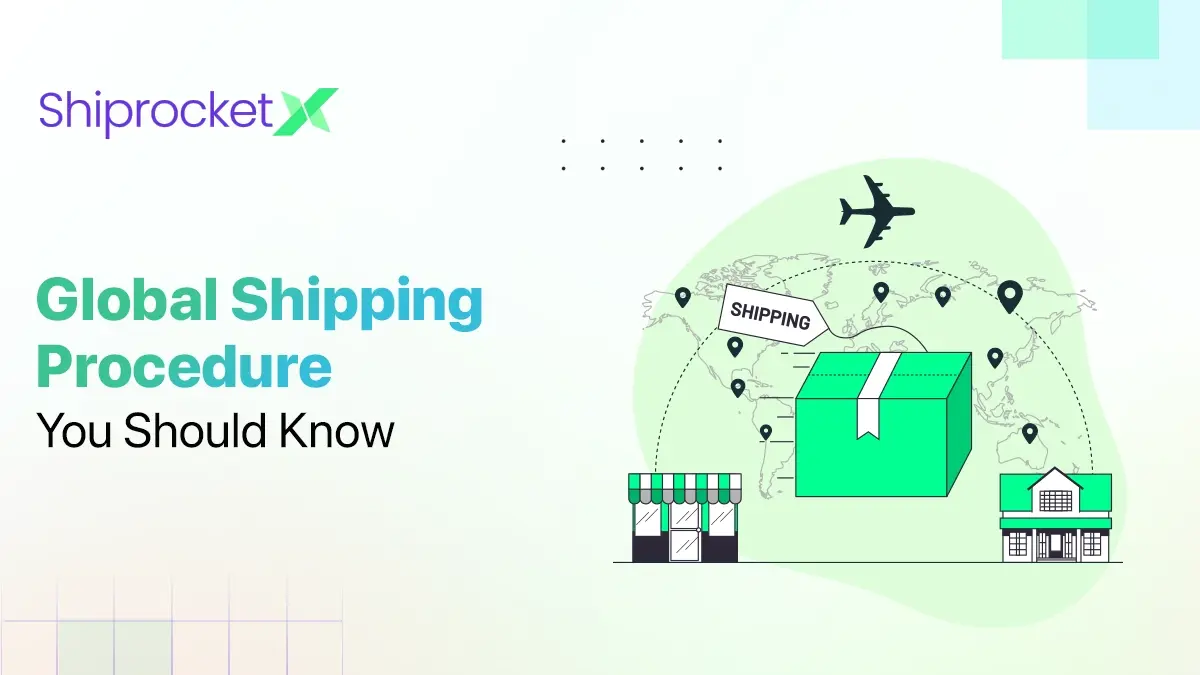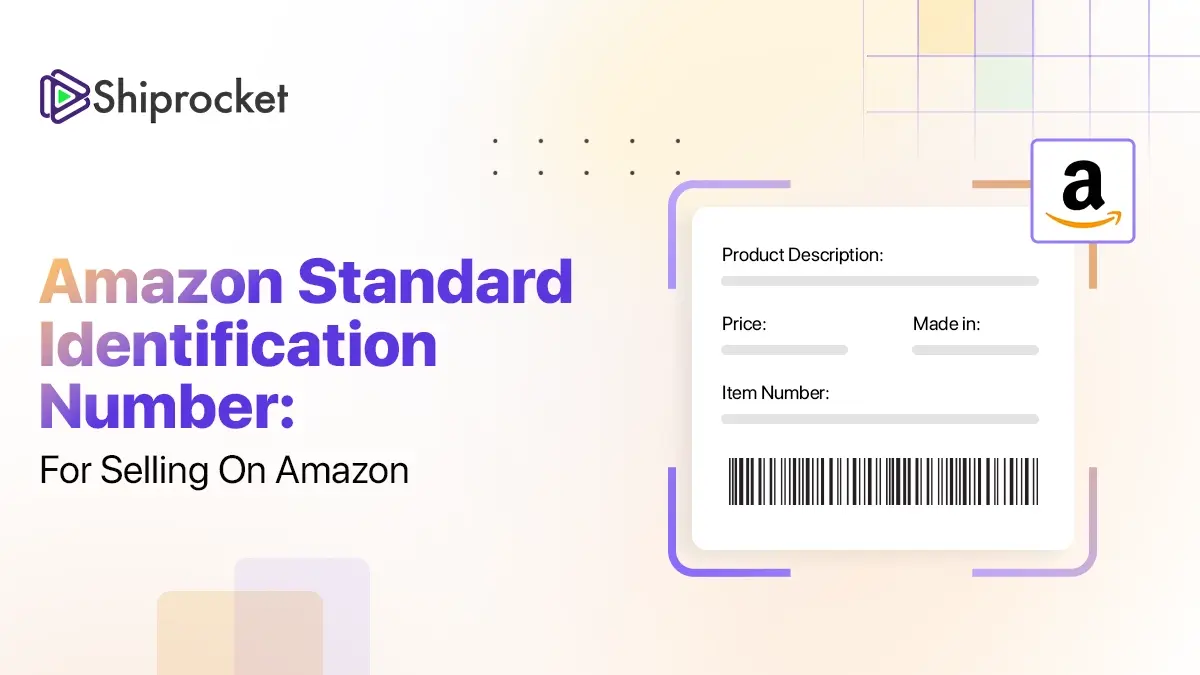What is Unified eCommerce and How is it Changing the Face of Retail
If you look at the past decade, there’s one form of business whose graph has witnessed a striking upward trajectory. We’re talking about eCommerce and the factors that have led to its exponential rise. Be it the rapid scale of digitization or the ever-growing opportunities that have brought the world closer, eCommerce has changed the way businesses sell goods and shape customer experiences.

eCommerce retailers like Amazon and Flipkart have led to a paradigm shift in the industry model and introduced many new capabilities to the realm of eCommerce. As a result, customer convenience has increased by multiple folds, ultimately leading to an immediate increase in the customer’s expectations.
According to research, 77% of customers are willing to recommend or pay more for a brand that provides personalized services.
While retail commerce continues to exist, businesses move towards eCommerce to accommodate more customer demands and increase customer satisfaction opportunities. Put differently, eCommerce has changed the way customers shop, pushing retail store owners to adopt methods that offer a greater degree of customer engagement.
The Transition from Omni-Channel to Unified eCommerce
To increase the top-line growth and overall customer experience, businesses started heading towards a new avenue of business, known as omnichannel. The omnichannel experience revolved around providing the customers with a consistent experience across all channels. To serve this purpose, companies had to get out of their comfort zones and create their presence on multiple platforms like online stores, social media, mobile applications, etc. All these touchpoints for the customer were provisions to keep them engaged and provide a platform from which they purchase everything they desired.
As enticing as omnichannel sounds, it has flaws of its own. One of the most crucial of these flaws was its inability to integrate the customer experience into a single platform. Omnichannel did provide multiple touchpoints to the customer, but they were scattered, leaving many gaps in the entire system. There was an urgent need for a system that could integrate all aspects of omnichannel into a single platform.

Welcome unified commerce- the ultimate business model that provides retailers an opportunity to enhance their operational efficiency, increase customer satisfaction, and cater to the customer’s unique needs.
What is Unified Commerce?
In today’s world, shopping is entirely different from the process of buying for a customer. This is primarily because shopping has become more of a social experience, encompassing a wide variety of experiences. The brands that recognize this fact put their energies into heightening customer experiences. Brands with tailored customer experiences are winning customer loyalty and growing unprecedented amidst the cut-throat market competition.
A report by Forrester highlights the fact that CX leaders grow their revenues faster than CX laggards.
Unified commerce is an approach that ties different aspects of customer experience together. It is a solution that merges all elements of physical and digital purchase channels. Additionally, it also helps unify the following aspects of the business-
- Incorporates technological components of sales, marketing, business operations, etc.
- Personalized services to meet the individual needs of customers.
- Ensures seamless mobile and web performance across all hours
- Ensures adaptability of web design configuration across multiple devices
Successful Examples of Unified Commerce
Alibaba is a perfect example of a brand that has adopted the unified commerce approach. The eCommerce giant in China uses a fashion AI that analyzes customer behaviors by tracking their activity. While entering the retail store, customers are asked to scan their mobile application, which links their shopping experience to their online Alibaba mobile application. Adding to this are the smart mirrors placed in the retail store that display the product information and mix and match product recommendations upon touch. To top it all, the virtual wardrobe feature in the app enables people to buy products they might have tried in the store.
Similarly, Amazon is unifying its retail and digital experience with Amazon Go convenience stores. The business model currently being tested in the USA enables people to walk out of the stores to choose products without paying any bills. Meanwhile, smart cameras and sensors keep track of customer purchases and charge their Amazon accounts’ statement.
Why is Unified eCommerce Important?
Unified eCommerce is becoming the reality of businesses across several industries. Here is what it helps you accomplish-
- Through unified eCommerce, sellers can leverage customer analytics. This can help them increase their operational efficiency profitability by catering to the individual needs of the customers.
- For customer service, unified eCommerce means a more informed interaction with customers. With access to real-time data and customer preferences, reps can have more meaningful conversations with customers.
- It also ensures adequate inventory due to sales forecasts. Businesses can analyze data and maintain the stocks of products that will be in demand.
- Lost sales opportunities can be reduced by keeping a close eye on inventory availability at a particular location.
How to make Unified eCommerce a Reality for Your Business?
Making Unified Commerce a reality for your business requires effort, but most of all, the zest to provide your customer with an unparalleled level of customer satisfaction. To begin with the process, you need to unify the processes running the backend of your business. The entire retail operations must be operated from a single point, connecting the underlying dots in your industry.

This is one of the critical areas where unified commerce differs from omnichannel. Omnichannel tried to make the customer experience constant across multiple channels, but behind all such channels were many standalone operations.
Therefore, if businesses have to unify eCommerce, they must look forward to starting from their backend and incorporating the following-
Holistic View of Customer Journey
One of the most fundamental tasks that businesses must do is to track customers across all existing channels. This data will help derive insights about the customer personas, their likes, dislikes, and preferences. Make the transition from one platform to the other seamless, enabling customers to finish purchases across any platform they prefer, regardless of their initial point of contact. The personalized shopping experience increases the likelihood of sales for you and proves to delight in the customers’ journey.
Anticipated Purchases
Stay ahead of the competition and anticipate what your customers want. It might seem straight out of a sci-fi movie, but to the surprise, many brands are already practicing it. Once you have holistic data of the customer across all channels, you will anticipate their future purchases and suggest products based on them. Meaningful product suggestions will not only improve the average order value but also provide value to the customer. Anticipating purchases can also help you stay on track with your inventory.
Decisions based on Consistent Data
If you are collecting data from multiple standalone points in your business, the chances are that there might be many discrepancies between them. Unified eCommerce facilitates a single point of data, ultimately simplifying the entire process. Not only will you trust this data more but derive insights that are more reliable and robust. This practice also facilitates real-time data and greater confidence over customer service and operations teams.
Rapid Deployment of Services
Unified eCommerce also gives you the confidence to release a new feature or update without any operational delays. When your entire retail architecture is a single platform, you get to share your data and functionalities seamlessly across multiple platforms. The complexity of integrations is ruled out, and the benefits of the latest updates and other attractive eCommerce features are passed on instantly to the customers.
Seamless Checkout Process
A seamless checkout process ensures a greater degree of convenience for your customers. Regardless of the channel, they first look at the product or choose to wishlist it; they must check out their choice platform. Such a coherent transition enures a long-term relationship and a more significant sale opportunity.
Unify your Order Fulfilment and Ship Seamlessly!
Order fulfillment is an essential part of your unified eCommerce strategy. Make sure you don’t comprise it at any cost. While most businesses hustle in unifying order fulfillment, it doesn’t necessarily have to be a complicated task. With Shiprocket’s one-stop solution for order fulfillment, unifying eCommerce for your retail store becomes more comfortable than ever. Based on the cloud, the logistics service provider offers you a platform to manage your inventory, keep track of your orders, ship via multiple courier partners and keep a check on your business analytics, etc., from a single roof. Moving forward, unified eCommerce will be the face of retail; the key to staying competitive is to adopt it now.






